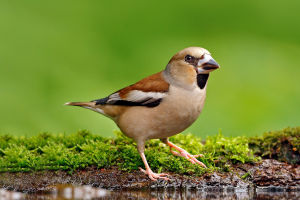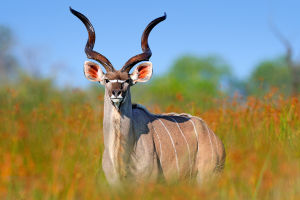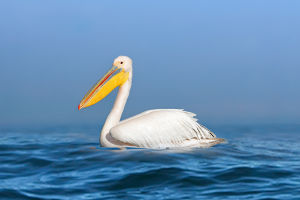
The Coccothraustes, commonly known as the Hawfinch or Gros-bec casse-noyaux in French, is a remarkable bird that stands out for its powerful beak and striking appearance.
Found across Europe, North Africa, and parts of Asia, this bird is a true testament to nature’s adaptability and efficiency, especially when it comes to cracking the hardest seeds and nuts.
Distinctive Features
The Hawfinch is a robust bird with a large, heavy-set body and a beak that is as strong as it is unmistakable. Measuring around 18 centimeters in length, the Hawfinch has a wingspan of 29 to 33 centimeters and weighs between 46 to 70 grams. Its most recognizable feature is its enormous, conical beak, which is specifically adapted for cracking tough seeds. During the breeding season, the beak turns a striking metallic blue, adding to its visual appeal.
The bird's plumage is equally striking. It sports a mix of rich chestnut and orange-brown tones on its head, with a contrasting black mask around the eyes. The wings are black with a brilliant white wing bar and blue gloss, making the Hawfinch’s flight an impressive display of color.
Habitat and Distribution
Hawfinches prefer mature deciduous woodlands and forests, especially those rich in oak, hornbeam, and cherry trees, whose seeds they love to feast on. They are also commonly found in parks and large gardens where suitable trees are present. Their range extends across Europe and into parts of Asia, with some populations migrating to warmer regions during the winter months.
Diet and Feeding Habits
The diet of the Hawfinch is predominantly made up of seeds, but what sets them apart is their ability to break open extremely tough shells. Using their formidable beak, they can exert a pressure of over 50 kilograms, easily breaking into cherry stones, olive pits, and hornbeam seeds. This unique adaptation allows them to exploit food resources that other birds simply can’t access. Besides seeds, they occasionally feed on insects, caterpillars, and fruits, particularly during the breeding season when they require additional protein.
Behavior and Breeding
Hawfinches are relatively shy and elusive birds, often spending most of their time high in the tree canopy, making them difficult to spot. They are usually solitary or found in pairs, although they may gather in small flocks during the non-breeding season. Their flight is strong and undulating, and while they may appear clumsy on the ground, they are skilled and cautious when feeding in trees.
The breeding season for Hawfinches begins in late spring. Males engage in courtship displays, including fluffing up their chest feathers and performing small flights to impress females. Once paired, the female builds a nest of twigs, roots, and moss, usually high up in a tree. She lays between 2 to 5 eggs, which she incubates for about two weeks. The young fledge roughly two weeks after hatching, but both parents continue to care for them until they are independent.
Conservation Status
Currently, the Hawfinch is classified as “Least Concern” by the IUCN, but its population has seen declines in certain areas due to habitat loss and changes in forestry practices. Conservation efforts focused on preserving mature woodlands and planting seed-bearing trees are crucial for maintaining healthy populations of this unique bird.
So, Lykkers, the Coccothraustes, or Hawfinch, is a fascinating example of avian specialization. With its extraordinary beak strength and vibrant plumage, it captures the interest of bird enthusiasts and nature lovers alike. Though elusive, spotting one in the wild is a rewarding experience, offering a glimpse into the remarkable adaptations that have enabled this bird to thrive in its habitat.
Immature Hawfinch (Coccothraustes coccothraustes)
Video by Michael Billerbeck - Birds & Nature


